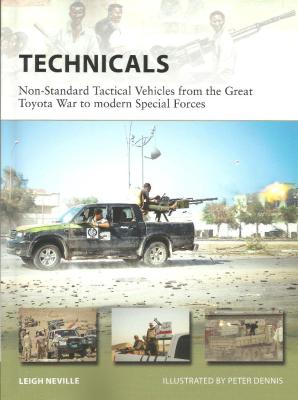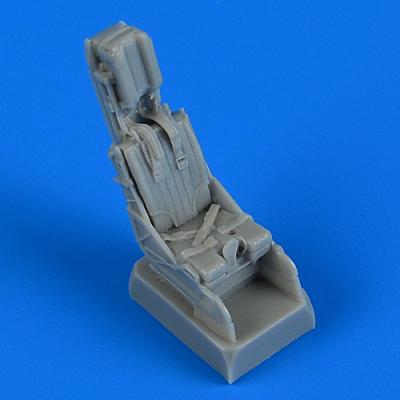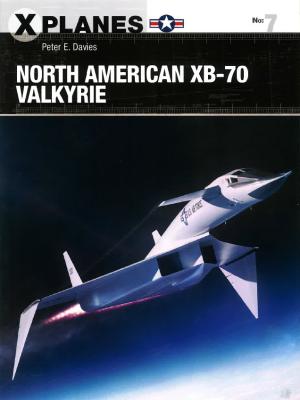Modern warfare within the last few decades has seen some remarkable (and sometimes deeply disturbing) changes. For the most part, combat in this century is no longer a matter of state-versus-state conflicts with large standing conventional armies facing off. It has instead devolved into much more local, sometimes tribal skirmishes with small, highly mobile forces either fighting other similar units or challenging large state armies with hit-and-run tactics which are oddly reminiscent of how American citizens fought against the much larger and better equipped British forces during the American Revolution. In a sense, what goes around comes around.
Welcome to the IPMS/USA Reviews site!
Introduction: The primary organization of the IPMS/USA Review website is by IPMS/USA National Contest Class. Within each Class there are sub-menus by kits, decals, books, etc. The Miscellaneous Class is for items that are not class specific or that cross two or more classes.
IPMS/USA Members: We encourage you to submit reviews, both here and to the Journal. To volunteer for membership in the IPMS/USA "Reviewers Corps" and submit your own reviews, please read the Guidelines For Submitting Product Reviews.
Manufacturers, publishers, and other industry members: IPMS/USA is pleased to offer your company the opportunity for product reviews. All product reviews are performed by IPMS/USA members, and are posted in the publicly-accessible section of our website. With very few exceptions, we perform full build reviews of new kit releases, aftermarket products, and supplies. If you would care to provide product samples for review, please contact John Noack, IPMS/USA 1st VP.
To learn more about IPMS/USA, please see our About Us page.
Our friends at BSI sent along a box of current and new releases across their line of CA products. Some of these may be familiar to you, others, like their new Plastic-Cure brush on product, were new to me.
Let’s take a look at the family of BSI products:
BSI-105 Plastic-Cure Adhesive: this new ½ ounce product comes in a bottle with a brush cap. Applied like many solvent based adhesives, it is applied to one of the mating surfaces and cures up in 10-20 seconds. It reacts to the Accelerator product as well, if an instant cure is desired. It won’t fill large gaps but is ideal for joints where the two surfaces make intimate contact (think fuselage seams, upper to lower wing joints, etc.)
Quickboost has added the seats for the AV-8B Harrier to their line of resin aircraft accessories. This latest addition is molded in a grayish resin, smooth, seamless and bubble free. The seat is molded in one piece and is easy to remove from the mold block.
The package states that it is for the Hasegawa kit but it would probably work well with any of the AV-8B Harrier kits. I compared it with the Hasegawa kit. Talk about a noticeable difference, the detail on the Quickboost part is outstanding. From the photos you can see that the Quickboost seat has the belts molded on it and I can’t believe the amount of detail. The seat that came in the kit is so plain and flat while the Quickboost seat is much more detailed.
This is the third book in this new Osprey series authored by Peter E. Davies. The previous tomes include the Bell X-1 (1), North American X-15 (3), Bell X-2 (6), and now this book on the North American XB-170 Valkyrie (7). Peter lives in Bristol, U.K. and as authored or co-authored at least twenty books on modern American combat aircraft, many with Osprey Publishing. He was published by the Naval Institute Press in 1997 with his hardcover book, The Harrier Story, co-authored with Anthony M. Thornborough. His Schiffer Military History hard cover on the Gray Ghosts, U.S. Navy and Marine Corps F-4 Phantoms published in 2000 is considered a must have. Peter published a hardcover book with Crowood Press, North American F-100 Suber Sabre, in 2003. He has also covered many aircraft in Osprey’s Combat Aircraft series, Osprey’s Air Vanguard series, and Osprey’s Duel series.
The Hawker Tempest was a WWII aircraft used mainly by the RAF although a few other country’s flew them. Primarily being used as ground attack aircraft it saw action in Operation Overlord and it was used to target railroads and Luftwaffe aircraft on the ground. The Tempest was an effective low-level fighter interceptor, even against the new Me-262 jet fighter. When the first 100 Hawker Tempest were built they were fitted with the long barrel 20mm Mark II. The rest of the production were built with the short barrel 20mm Mk V cannons carrying 800 round of ammo shooting at 200rpg.














